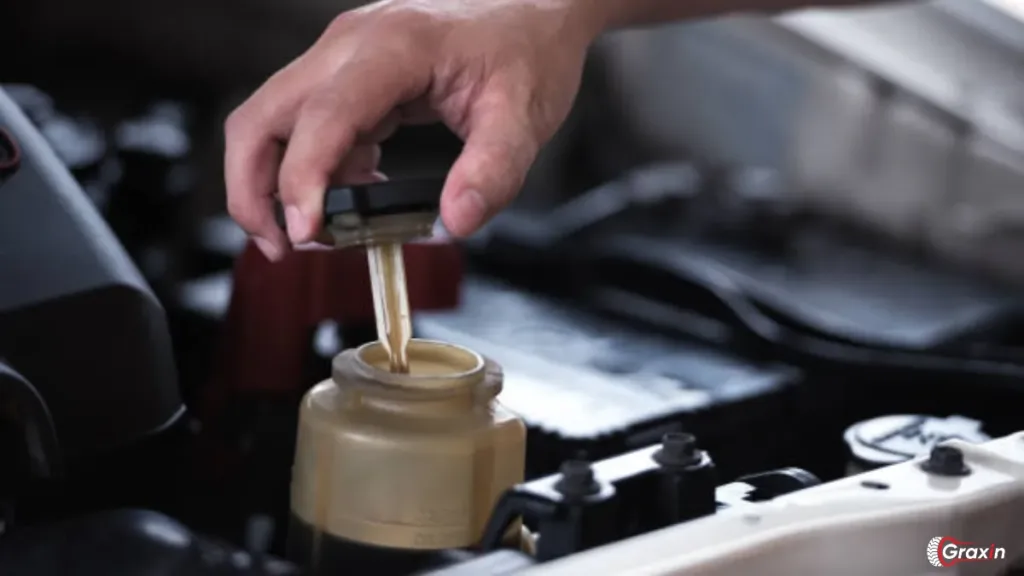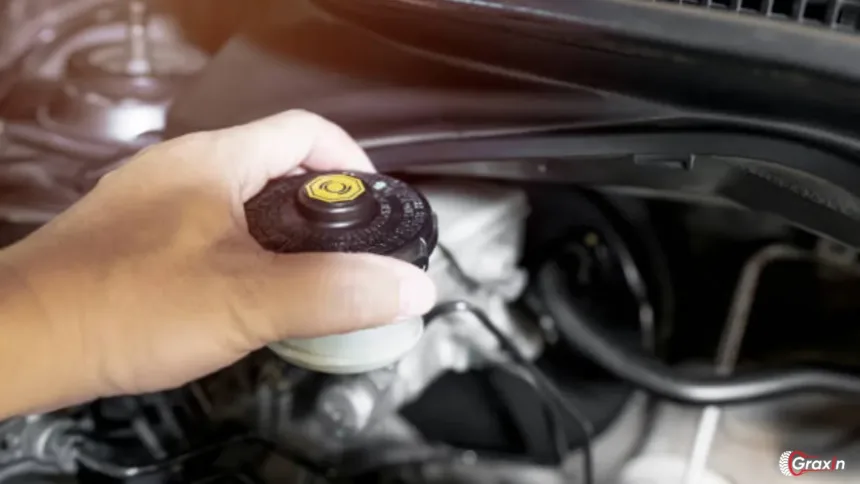Introduction
Ever try to steer a car without the benefit of power steering? Now, that’s wrestling with a heavyweight champion. That is why the power steering reservoir plays such a crucial role in your vehicle’s steering system-by making sure that there is just the right amount of power steering fluid flowing through, easy to turn the wheels and it feels like pie. But what is this little component actually doing? And how can you keep it in tip-top shape?
In this guide, we will expose you to all you need to know regarding power steering reservoirs – what they are, how they work, common problems, and when to replace them.
What is a Power Steering Reservoir?
It’s a container of hydraulic fluid in your car’s power steering that stores the hydraulic fluid used. Think of it as a pantry with fluid on standby: whenever your steering system needs just a little extra push, the reservoir supplies the goods. Without it, your steering system would be running on fumes–in other words, some serious steering struggles would ensue.
Importance of Power Steering in Modern Vehicles
Modern cars rely very much on power steering to make maneuvers as smooth as pie. Without it, you would indeed have to exude much effort for every turn. Hence, this would be only if the reservoir was able to keep the feeling of smooth steering by always having enough hydraulic fluid in the system.
How the Power Steering Reservoir Works
How does a power steering reservoir work? The power steering reservoir offers a storeroom and measuring for the fluid, which is significant in delivering power to your steering. This fluid is then moved all through the system when turning the steering wheel, where it sends hydraulic pressure that helps in your movement. It then pumps this fluid back into the reservoir continuously.
The Flow of Power Steering Fluid
Power steering fluid moves in a loop, flowing from the reservoir to the power steering pump, through the hoses, and finally into the steering gear. After it has done its job, the fluid returns to the reservoir, where it is stored until needed again.
Types of Power Steering Systems

Not all power steering systems are the same. There are two primary types hydraulic power steering and electric power steering.
Hydraulic Power Steering
Hydraulic power steering uses the power steering fluid stored in the reservoir to create hydraulic pressure that helps you turn the wheel.
Electric Power Steering
In contrast, electric power steering uses an electric motor instead of hydraulic fluid to assist with steering. While electric systems don’t rely on a reservoir, they do have other components that need maintenance.
Key Components of a Power Steering System
Understanding the components of a power steering system is crucial for knowing how each part plays its role. Here are the primary parts:
- Reservoir: Holds the power steering fluid.
- Pump: Pressurizes the fluid so it can flow through the system.
- Hoses: Carry the fluid to and from the pump and steering gear.
- Rack and Pinion: The mechanism that actually turns the wheels.
Materials Used in Power Steering Reservoirs
Power steering reservoirs can be made from either plastic or metal.
Plastic
Plastic reservoirs are lightweight and inexpensive, but they can be prone to cracking over time, especially with prolonged exposure to heat.
Metal
Metal reservoirs are more durable but heavier and typically more expensive. They’re less likely to crack but can corrode if not properly maintained.
Signs of a Failing Power Steering Reservoir
Wondering how to tell if your power steering reservoir is on its way out? Look for these common signs:
Low Fluid Levels
If your power steering fluid is always running low, your reservoir might be leaking.
Whining Noise
A whining noise when turning the wheel often indicates a lack of fluid, which could point to a problem with your reservoir.
Fluid Leaks
If you notice power steering fluid (usually red or pink) pooling under your car, it’s a sure sign there’s a leak in the system, possibly from the reservoir.
How to Check Power Steering Fluid
Keeping your power steering fluid at the right level is key to preventing steering issues. Here’s a simple step-by-step guide:
- Locate the power steering reservoir under your hood.
- Unscrew the cap and check the fluid level using the dipstick or level indicator.
- Top off with the recommended type of power steering fluid if necessary.
Common Power Steering Reservoir Problems

Cracks and Leaks
Cracks in the reservoir can lead to leaks, which will cause a drop in fluid levels and potentially damage other parts of the steering system.
Contaminated Fluid
Over time, debris and dirt can enter the reservoir, contaminating the fluid and reducing its effectiveness.
Clogged Reservoir
A clogged reservoir can restrict the flow of fluid, leading to poor steering performance.
How to Replace a Power Steering Reservoir
Replacing a power steering reservoir isn’t too complicated if you have the right tools and knowledge.
Tools Needed
- Wrench set
- Pliers
- Drain pan
- New reservoir
Step-by-Step Guide
- Drain the old power steering fluid.
- Disconnect the hoses from the old reservoir.
- Remove the old reservoir and install the new one.
- Reconnect the hoses and refill with fresh fluid.
Maintaining Your Power Steering System
Regular maintenance can prevent many power steering issues. Here’s what you should do:
Fluid Check and Refill
Regularly check your fluid levels and top off if needed.
Inspect for Leaks
Keep an eye out for leaks, especially around the reservoir and hoses.
DIY vs Professional Repair
When to Do It Yourself
If you’re comfortable working on cars and have the right tools, replacing a reservoir is a job you can do at home.
When to Call a Mechanic
If you’re unsure about the process or lack the necessary tools, it’s best to leave the job to a professional.
Preventing Power Steering Issues
Preventative maintenance is the best way to avoid costly repairs down the road.
Regular Fluid Changes
Changing your power steering fluid every few years can help prevent contamination.
Keeping an Eye on Warning Signs
Address warning signs like whining noises or low fluid levels immediately to prevent further damage.
Cost of Power Steering Reservoir Replacement
Replacing a power steering reservoir typically costs between $150 and $300, depending on your car’s make and model. Labor costs can add another $50 to $150 to the total.
Conclusion
Although the power steering reservoir may seem so small, its role in keeping your steering always smooth and responsive is indeed huge. Checks on fluid levels and leaks can be important in ensuring that your power steering system remains in top shape. At the first suspicion of failure, don’t ignore the signs; instead, have it checked to avoid bigger more costly repair later on.
FAQs
How often should I check my power steering fluid?
It’s a good idea to check your power steering fluid every month or whenever you perform routine maintenance.
Can I drive with a leaking power steering reservoir?
It’s not recommended. A leak can lead to a loss of steering assistance, making your car difficult to control.
What type of fluid should I use in my power steering system?
Always use the fluid type recommended in your car’s owner’s manual. Using the wrong type can damage the system.
How long does it take to replace a power steering reservoir?
A professional can usually replace a power steering reservoir in about 1 to 2 hours.
What happens if I don’t fix my power steering reservoir?
Ignoring a failing reservoir can lead to steering difficulties, fluid leaks, and even damage to other parts of the system.
Also Read: Understanding the Coolant Bypass Valve







